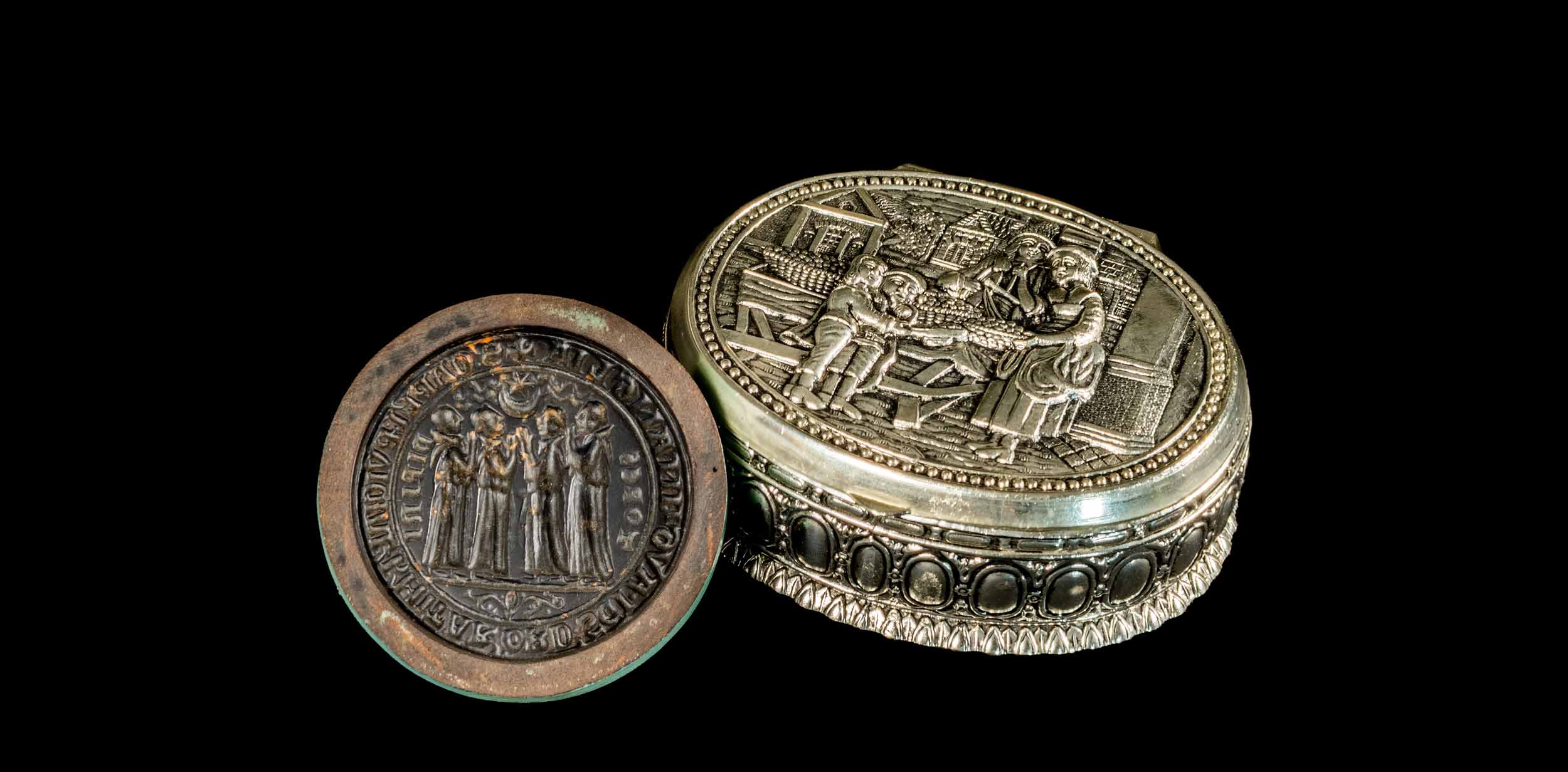The History of the Augustinians in Dungarvan
In the year 1290, a small number of Friars; members of the Augustinian Community at Clare Priory in Suffolk (UK), landed where now stand the ruins of the Augustinian Abbey in Abbeyside, adjacent to the present-day St. Augustine’s Parish Church. By the grace of God and the magnificent support of the good people of this locality – in spite of dungeon, fire and sword – over many centuries, the Augustinians are still here and still ministering to the needs of the people as was the intention of St. Augustine all those many years ago.
It would appear that the Augustinians were to live peacefully in their new home in Abbeyside for the next 250 years until the English monarch, King Henry V111, declared himself “only supreme head on earth of the whole church in Ireland”. This resulted in the Act of Suppression of the Monasteries (Abbeys) in the late 1530s/early 1540s. After this, it seems that the Abbey was taken over by 1541 and the Friars expelled.
History also records that the Augustinian Friars remained in the vicinity, although secretly, many of them hiding out in the Comeragh mountains where they were given shelter and provisions by the local people who remained steadfastly loyal to their Catholic faith, despite the terrible persecutions that ravaged the country at that time. This was the situation right throughout the time of the horrid Penal Laws (1691-1760).
But now let us fast forward to the 1800s when the Friars decided to move into the town and open a church/chapel there (not without some controversy, it must be said), but, by the grace of God, it was eventually completed. So, before the end of 1829, the Church of St. Augustine – where we are now worshipping today – was opened for public worship.

Work on the present Priory (the eye-catching red-brick building on Lower Main Street) commenced on 3rd September 1871. It was ready for habitation in May 1873. The Prior at the time was a “quiet and unassuming” man by the name of James Williams. He also founded St. Augustine’s College, thus opening a new chapter in the history of the Augustinians in Dungarvan.
A start was made in 1874 when Fr. James Williams. OSA, the then Prior, began teaching classes on the ground floor of the newly-built Priory/Friary House and in the Town Hall, for as yet there was no proper school building. However, it fell to one of his successors, Fr. Jeremiah O’Brien OSA, who set about reconstructing a newly acquired building on the site of the present old school in Main Street. This same Fr. O’Brien introduced the first boarding pupils.
As the school’s reputation and good name continued to flourish, the demand for more accommodation for the increasing number of boarders became a pressing need. And so it was that in 1904 a new three-storey building was erected under the watchful eye of the fourth Rector, Fr. Robert Fitzgerald, OSA. As well as the usual classrooms, it also had a dormitory for thirty pupils.
In 1948, the Rector, Fr. Nicholas Duffner, OSA, acquired the property known as Maloney’s corn store and stables. This ten became a dormitory for about 100 boys with refectory, kitchen and a concert hall. The first school concert was “HMS Pinafore” staged in 1951”.
With the increase in the number of pupils from 12 boarders in 1957 to 162 boarders in 1965, and from 20 day-pupils to 130 in 1972, the need for a more spacious and more modern school was long overdue. Accordingly, in April of 1967, a new site was chosen only a mile and a half from Dungarvan Town and convenient to Abbeyside. And so it was that in 1970 building commenced on what is now St. Augustine’s College. Two years later, in 1972, September, to be precise, 300 pupils took up residence under the watchful eye of Fr. Dominic Daly, OSA. The Augustinian Friars had once again returned to Abbey, the neighbourhood of their original foundation where the College continues to go from strength to strength, thanks in no small measure to the marvellous lay staff teaching and administering there.
(“History of the Augustinians in Dungarvan” by: Thomas C. Butler - OSA.)
Our Founder
Augustine was born in Tagaste, North Africa, in the year 354. His mother Monica was a devote Christian and ensured Augustine received a Christian education. But Augustine, in early adulthood, left the faith before returning to it many years and after many adventures. At one time, he was even a member of a religious sect called Manicheanism. However, after travelling to Italy, he was drawn back to the faith by the preaching of St. Ambrose, then bishop of Milan, and at the age of 33, Augustine converted back to Christianity.
St. Augustine’s education in philosophy served him well as a priest and bishop (of Hippo, in North Africa), and he remains one of the most prolific writers of the Catholic Church. His works include sermons (of which more than 400 survive), refutations of heresies, his Confessions and theological masterpieces such as the City of God, On the Holy Trinity, and The Enchiridion. Although the Order of St. Augustine was not founded until 1244, he also wrote a rule prescribing a way of life for men and women who desire to live in a religious community. This guide is now known as the Rule of St. Augustine. St. Augustine died in 430 in Hippo, but his influence and life still live on in our communities today.
Vocation
Discover the Augustinian Life
Contact
St. Augustine’s Priory
Parnell St.
Dungarvan
Co. Waterford
X35 DP73
email: info@thefriarydungarvan.ie
email accounts: dvanaccounts@gmail.com
Tel: +353 (058) 41136

